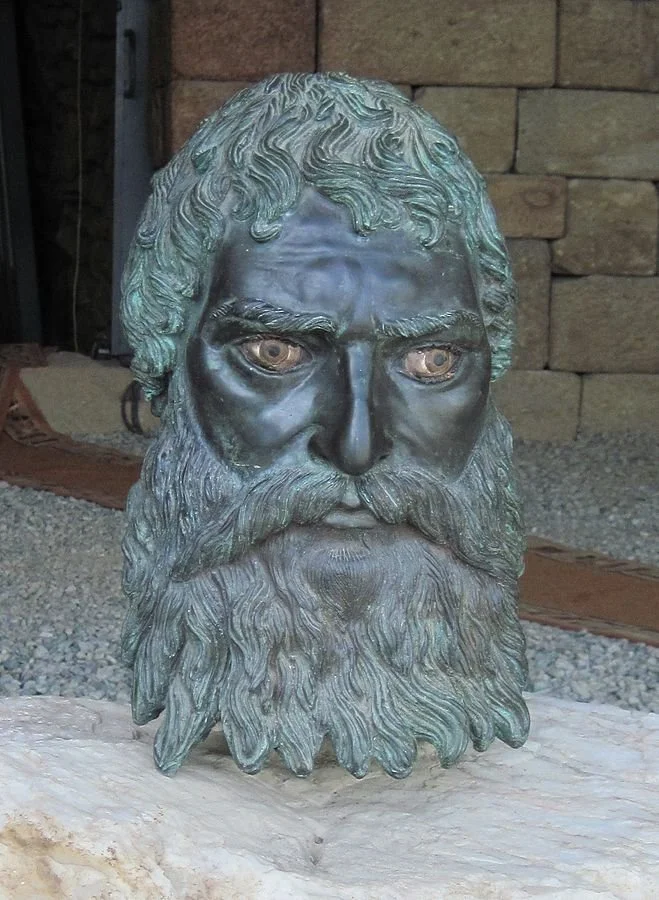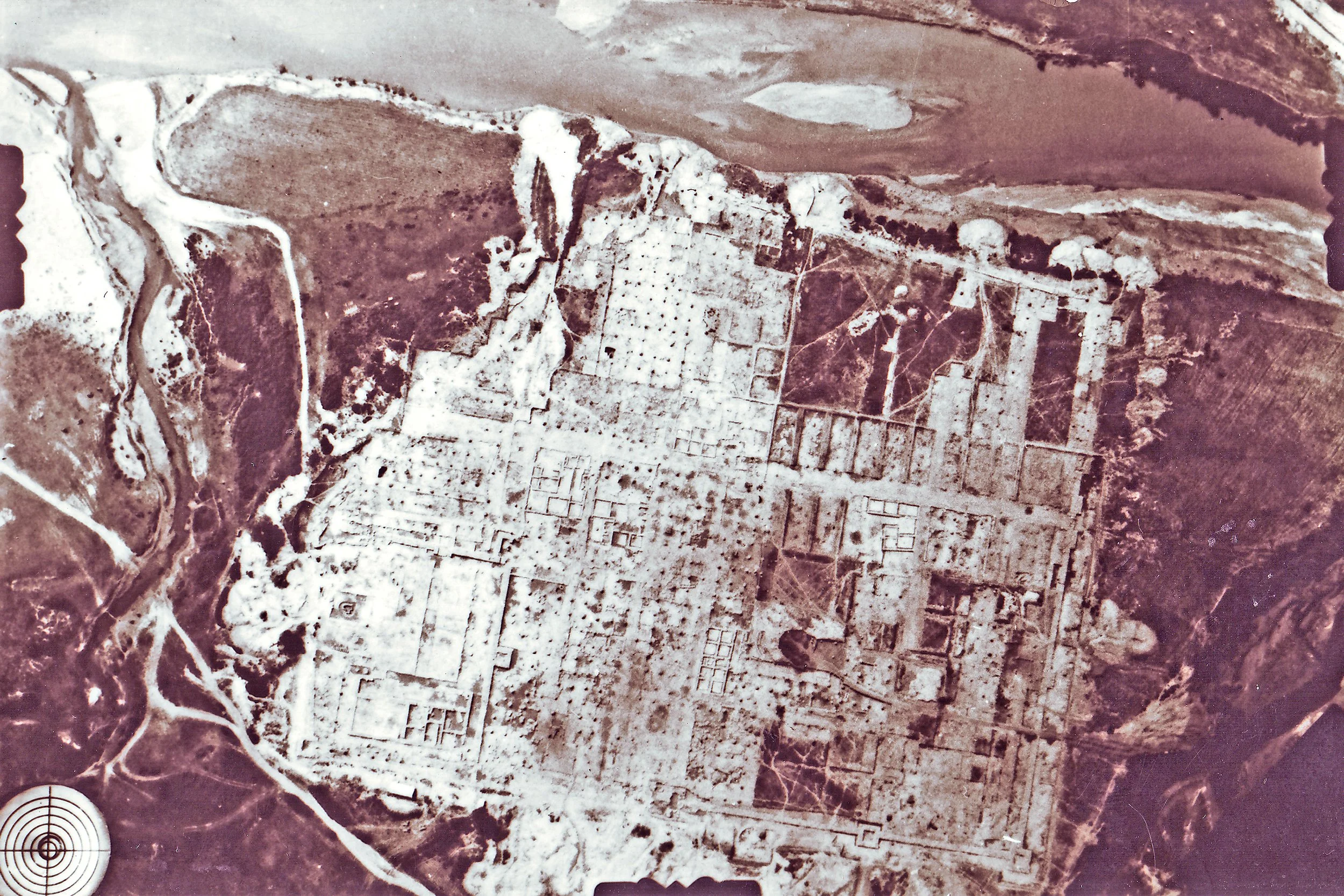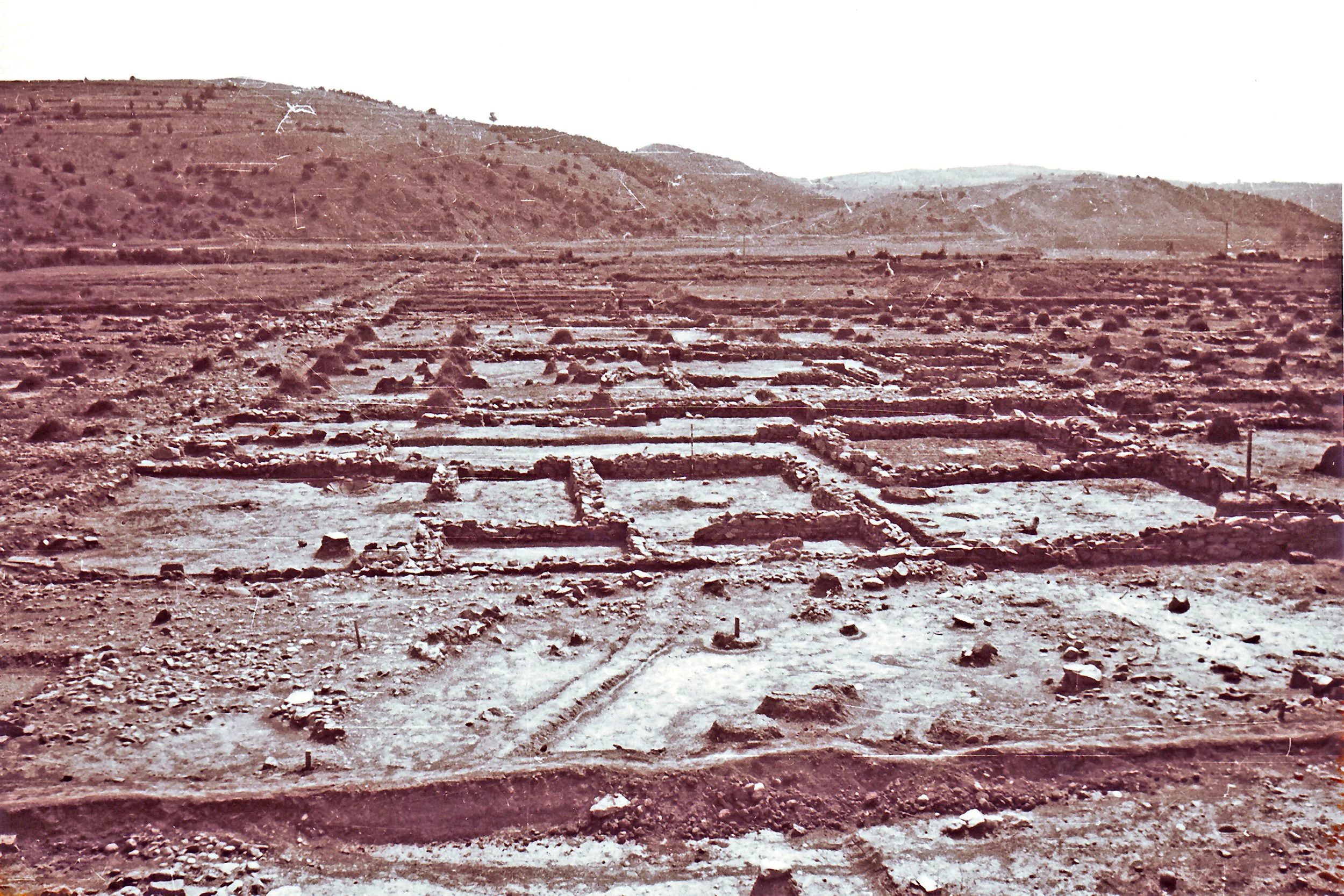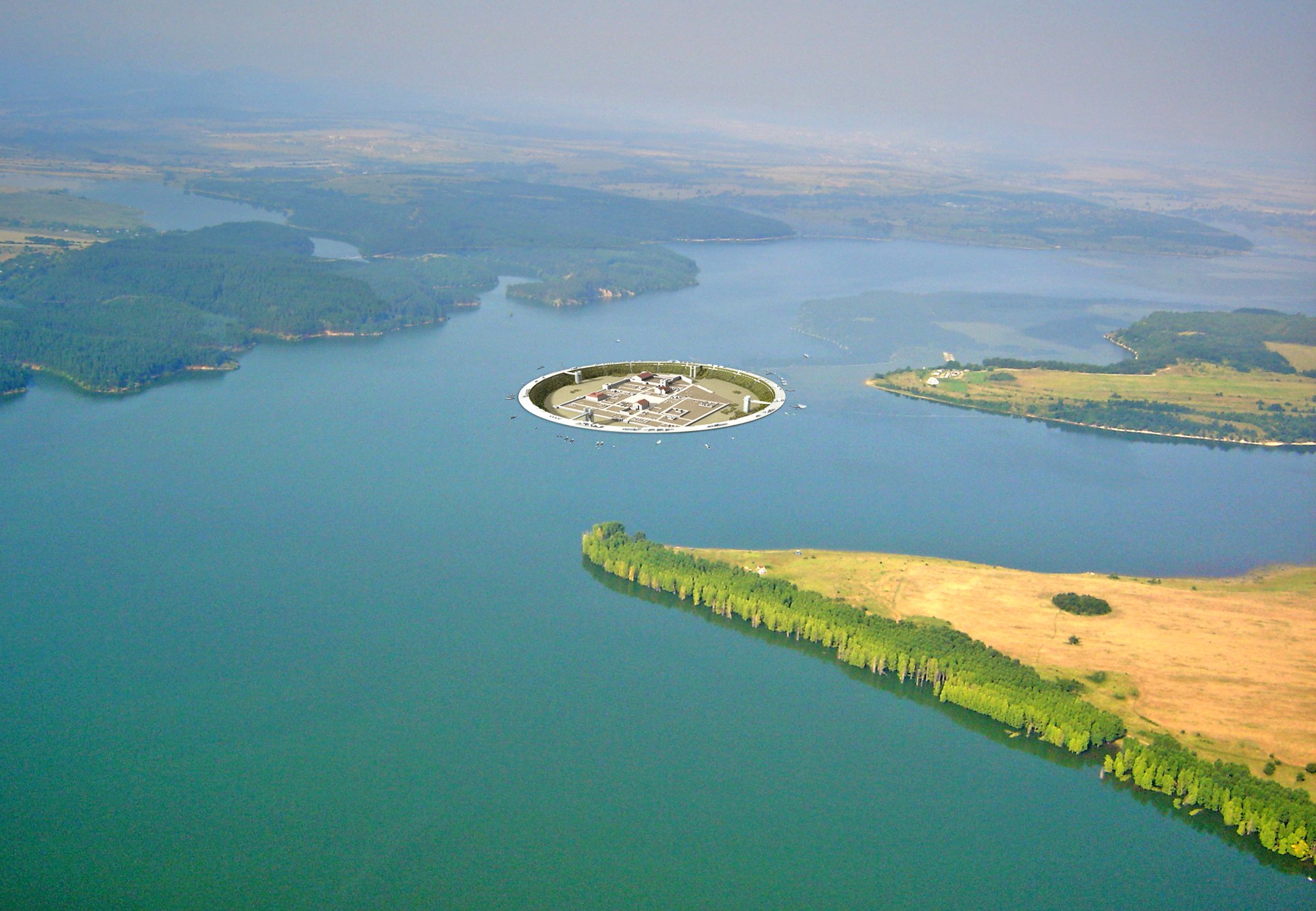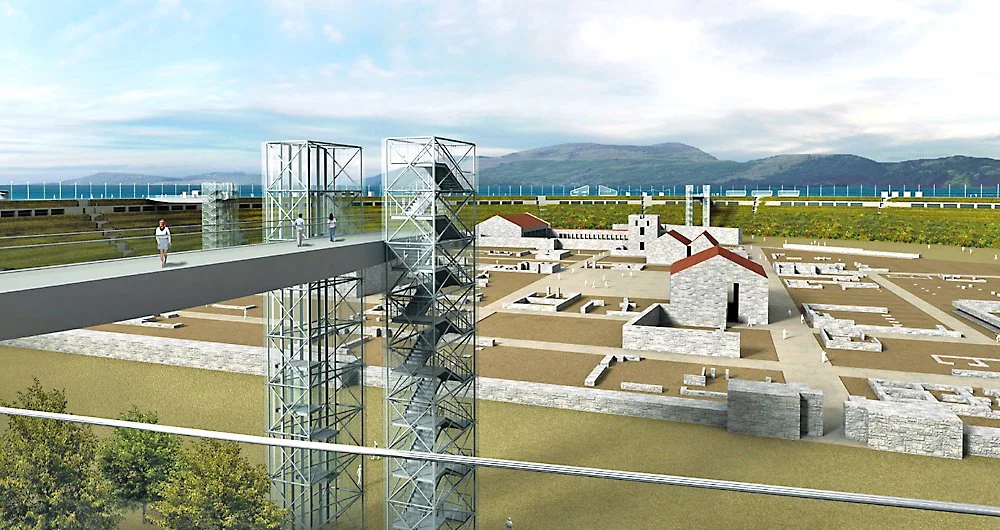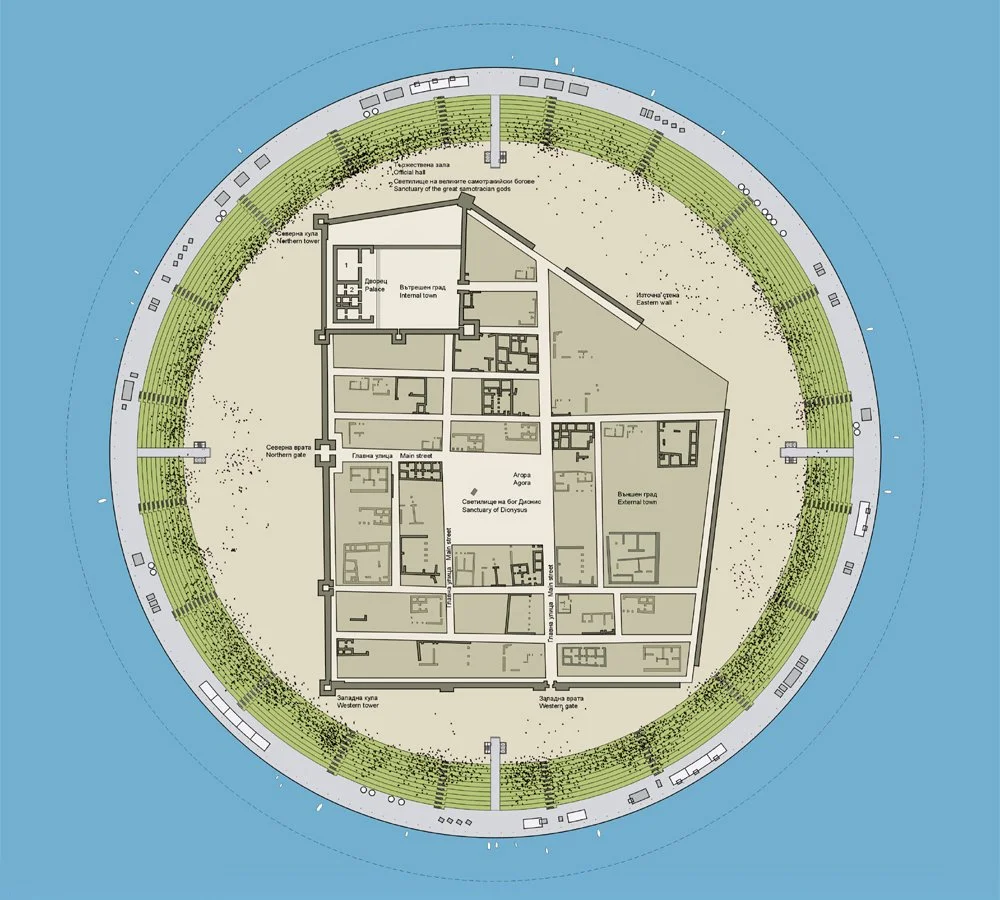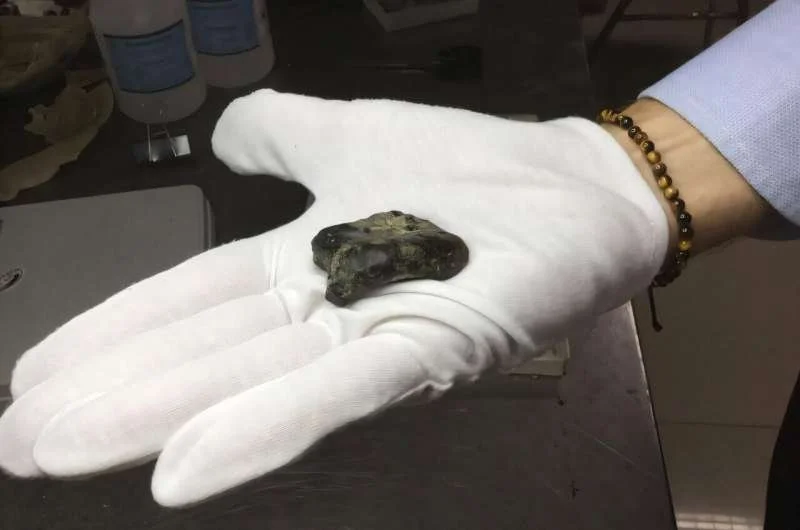Since time immemorial, human history has had a flair for the dramatic; tales of lost cities and ancient civilizations have captured our collective imagination. One such story that has recently become the center of archaeological attention is the submerged Thracian city of Seuthopolis. Located in modern-day Bulgaria, this ancient city has been hidden beneath the waters of the Koprinka Reservoir since the mid-20th century. However, thanks to a bold and innovative restoration project led by the Bulgarian government, this lost city is on the verge of seeing the light of day once again.
Seuthopolis was an ancient city established by and named after Seuthes III, who ruled the Odrysian Kingdom of Thrace from 331 to 300 BC. Located in what is now modern-day Bulgaria, it was the capital of the Odrysian kingdom and the personal residence of King Seuthes III.
Seuthopolis was founded around the end of the 4th century BC, during a period of political and military upheaval in Thrace caused by the campaigns of Philip II of Macedon and Alexander the Great. Seuthes III, a Thracian dynast, saw an opportunity in this turmoil and declared himself an independent king, founding Seuthopolis as his capital. The city was laid out on a Hippodamian grid plan, an urban planning design named after the Greek architect Hippodamus of Miletus. This design was characterized by a rectangular city layout divided into square blocks with streets intersecting at right angles, a model commonly used in the Hellenistic period.
Reproduction of a bronze portrait bust of the Thracian king Seuthes III, found in his tomb outside Seuthopolis (Author: QuartierLatin1968)
Seuthopolis was surrounded by a fortification wall and had several city gates. Inside, the city was divided into residential, administrative, and sacred zones. The residential zone consisted of homes, while the administrative zone contained buildings for governance and other civic duties. One of the central features of the city was the palace of Seuthes III, a two-story building with a unique architectural design. This palace was surrounded by a fortified wall and had a sacred area within its premises, suggesting the dual role of the king as both a political and religious leader.
Life in Seuthopolis was typical of Hellenistic cities at that time. Archaeological findings suggest an advanced level of urban life with a developed economy based on agriculture, crafts, trade, and metallurgy. The city likely had a diverse population of Thracians, Greeks, and possibly other ethnicities, and it served as a vital center for the cultural, economic, and political life of the kingdom.
Discovering Seuthopolis
Seuthopolis thrived until the end of the 3rd century BC, after which it began to decline, possibly due to political instability and external invasions. By the end of the 1st century AD, during Roman rule, the city was largely abandoned.
The ruins of Seuthopolis remained hidden until they were rediscovered in the 1940s during the construction of the Koprinka Reservoir. Despite its remarkable state of preservation, the decision was made to flood the area, submerging Seuthopolis under approximately 20 meters of water, in order to create the reservoir.
The city's unique urban planning, complete with fortified walls, administrative and religious buildings, residential quarters, and even a marketplace, provided invaluable insight into the Thracian civilization. The submerged city, therefore, became a treasure chest of information waiting to be opened.
The Restoration Project
Bulgarian architect Zheko Tilev
The vision to resurrect Seuthopolis first took root in the early 21st century. Bulgarian architect Zheko Tilev proposed the idea of constructing a circular dike around the city, thus allowing the water to be pumped out and revealing the city for study and tourism. His idea, however, remained dormant until it was adopted by the Bulgarian government in 2023.
This groundbreaking project is not only about archaeology and history but also about engineering and architecture. It involves the construction of a 420-meter-diameter circular dike around Seuthopolis, effectively creating an artificial island in the middle of the reservoir. Once the water within this perimeter is pumped out, the city will rise once again, offering a unique view into the past.
The restoration project plans also include the construction of a museum, visitor center, and park, transforming the ancient city into a vibrant tourist hub. The project aims to merge the ancient and the contemporary, creating a space where visitors can explore Thracian history while enjoying modern amenities.
The Night-time Spectacle
From a distance, the Seuthopolis restoration site at night presents a captivating sight. The contrast of the dark night sky, the glowing artificial lights reflecting off the water, and the slowly emerging ancient city creates a surreal and majestic tableau. It is a testament to the combined efforts of the present to resurrect the past.
The project, once completed, also has plans for a nighttime spectacle for visitors. Architectural lighting will highlight the restored city's features, allowing visitors to appreciate the ancient Thracian architecture under the stars. The museum and visitor center will also host evening events, including educational programs, cultural performances, and other activities that bring Thracian history and culture to life.
The restoration of Seuthopolis is indeed a 24/7 endeavor, a project that holds great promise for the future of archaeological preservation and heritage tourism. At night, under the cover of darkness and the glow of artificial lights, the site becomes a symbol of human perseverance, ingenuity, and our enduring connection to the past.
Computer generated images from: Seuthopolis Project
Restoration Challenges and Progress
Though ambitious in its scope, the restoration project has not been without its challenges. The technical difficulties involved in constructing a circular dike in a reservoir while ensuring the structural stability of the ancient ruins are immense. Furthermore, the project also has to balance archaeological preservation with public accessibility, which often pose conflicting demands.
However, the Bulgarian government, working in collaboration with international archaeological and engineering teams, has made significant progress. As of 2023, the initial construction of the dike is underway, and the project has attracted global attention for its innovative approach to heritage management.
Implications for the Future
The Seuthopolis restoration project represents a new approach to archaeological preservation and heritage tourism. By transforming an ancient submerged city into a living museum, it is creating a unique model for other countries with similar hidden treasures. It is an effort that signifies the Bulgarian government's commitment to preserving and showcasing its rich history and cultural heritage.
As Seuthopolis gradually emerges from its watery grave, it promises to provide not just a snapshot of Thracian civilization but also a testament to modern human ingenuity. The restoration of Seuthopolis is a grand project in the truest sense, uniting past, present, and future in a symphony of discovery, innovation, and heritage.
Computer generated images from: Seuthopolis Project
Promoting Cultural Understanding and Exchange
Unveiling Seuthopolis is not just about the physical process of draining water and restoring buildings; it also involves the resurrection of an ancient culture and its integration into our modern understanding of history. The city is a treasure trove of information on Thracian life, governance, religion, and commerce. As such, the restoration project aims to foster cultural understanding and exchange by enabling people from all walks of life to learn about and appreciate this ancient civilization.
Computer generated images from: Seuthopolis Project
Environmental Considerations
A key aspect of the Seuthopolis restoration project is its commitment to environmental sustainability. Measures are being taken to ensure that the restoration does not adversely affect the surrounding ecosystem of the Koprinka Reservoir. The project employs modern environmental engineering techniques to minimize disruption to local wildlife and aquatic ecosystems.
The Road Ahead
While the journey is far from over, the Seuthopolis restoration project has already achieved a great deal. As the dike construction progresses and the city gradually resurfaces, the world watches with bated breath. The project has sparked global interest in Thracian history and culture and in the innovative methods being used to bring this ancient city back to life.
The restoration of Seuthopolis is a beacon of hope for other submerged cultural heritage sites worldwide. It shows that with the right blend of vision, will, and technological innovation, no part of our past is beyond reach. As the Bulgarian government continues its mission to resurrect Seuthopolis, it sends a powerful message about the importance of heritage preservation and the infinite possibilities of human innovation.
Computer generated images from: Seuthopolis Project
The restoration project of the submerged ancient Thracian city of Seuthopolis is a testament to the Bulgarian government's dedication to preserving its rich history and cultural heritage. As this ambitious project continues to unfold, it encapsulates the spirit of human curiosity and ingenuity, providing a model for the future of archaeological restoration and heritage tourism.
In the grand tale of human history, Seuthopolis is set to rise from its watery depths, not just as an archaeological site but as a symbol of the enduring legacy of our past and our unwavering resolve to reclaim it. As we look forward to the day when the city of Seuthes III stands proud once again, we are reminded that our shared history is a story of resilience and rediscovery, one that continues to unfold with each passing day.


